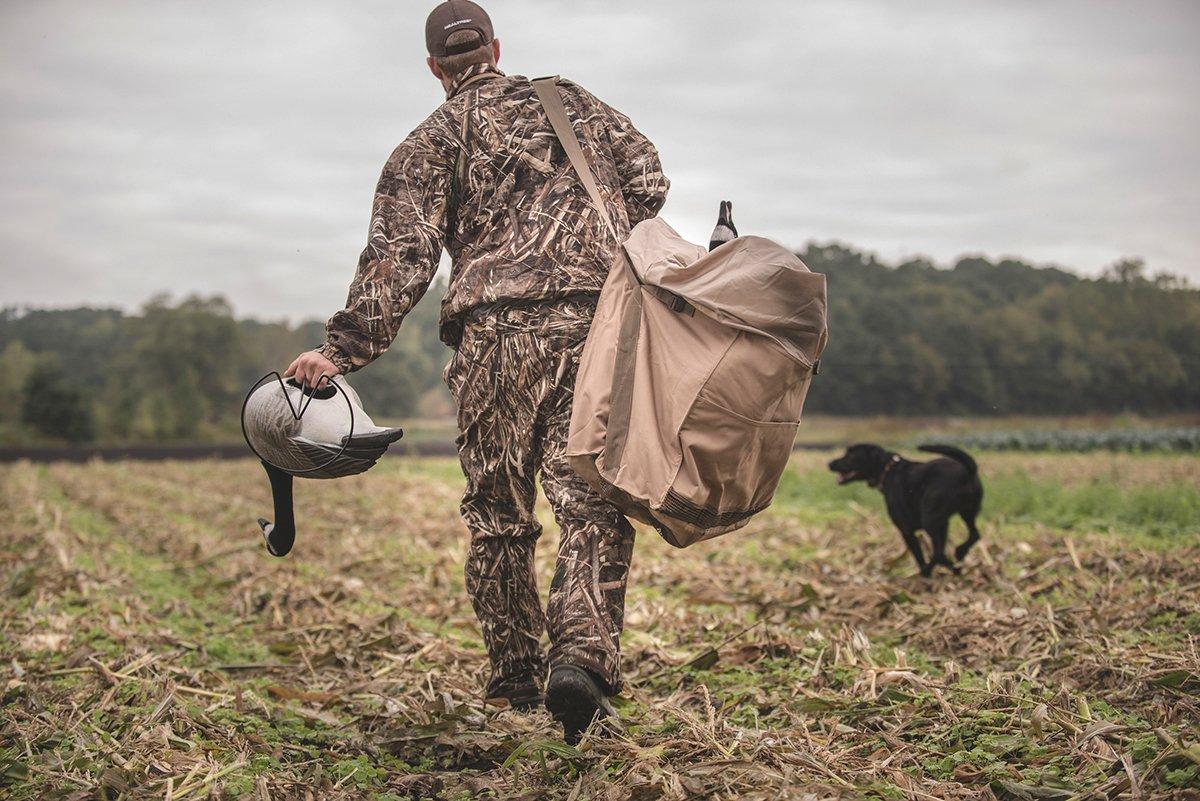We Love Local Honkers, but the September Game Presents Challenges
The first shots of goose season echoed across many states this past week, kicking off the 2018-'19 hunt. Early morning smiles and multi-honker piles have returned.
But although the act of September goose hunting — endless scouting, seeking permission, lugging decoys, grassing in blinds and tuning up calls — resembles its late-season iteration, let's agree that early seasons differ from peak-migration and late-season hunting. Summer scenery dominates the landscape. The pre-dawn air smells different. And the ultra-early wake-up calls shock your system.
But it goes deeper than that. Here's why.
Hiding Made Easy … or More Difficult
During early seasons, most natural cover is at its peak. Thick weeds and grasses choke ditches, fence lines and mid-field rock piles, easily hiding hunters without blinds. Lush alfalfa covers many hay fields, concealing shooters in thick green leaves. And standing corn tops everything else, providing near invisibility and darn comfortable seating, too. Hunters have great options to hide from sharp-eyed honkers.
That is, unless geese are using large cut cereal-grain fields, such as oats, rye, wheat or barley. Hiding in such spots is like trying to conceal the 8-ball on a pool table. Oh, and did I mention that geese across the North and Midwest love — even rely on — those early cereal grains? Dig out the field blinds, and grass them up. Find as much straw as possible to bury your hide and obscure your outline. Or search for similarly colored weeds or grasses.
The early season cover game ranges from embarrassing riches to basically open ground. Do the best you can with what you have. But remember, taking chances with cover usually leads to failure.
Honkers Made Easy … or More Difficult
Likewise, early season birds seem to be a study in contrasts. On one hand, geese usually lock into easy-to-identify feeding patterns, and because their options are often limited — remember those cereal grains? — you might find most of the honkers in an area at one hot field. Further, because adults haven't been shot at for months and young-of-the-year goose numbers are at their peak, the first few days can be magical.
Conversely, old, wise and paranoid geese and ganders lead those wonderful family groups, and those birds have learned a trick or three through the years. Funny-looking lumps in an otherwise flat field? Flare. Something unnatural about those geese on the ground? Flare. Breaking dog or other ill-timed movement? Mega-flare.
You can easily pattern and form solid plans on local geese. But be on your game when hunting them, because those veteran birds guiding the flock won't fall for C-plus concealment, spreads and calling.
Shorts and ThermaCells
As mentioned, the environs for September honker hunting differ greatly from the blinds of October and the pits of November and December. It's still summer, and although photoperiodism and some cool fronts have birds on the move, warm weather dominates. Forget your insulated jacket and stocking cap. If cover allows, early goose hunting often requires shorts and perspiration-wicking T-shirts. Wear boots if you like, but I've seen many guys hunt in sandals. At a minimum, you'll want light boots, light pants, a vented shirt and a baseball cap.
Likewise, pay more attention to field care of meat during this period. Don't let those geese bake in the sun for hours while you pick up decoys and take photos. Bring coolers with lots of ice, and consider cleaning birds in the field and cooling the breasts and legs as soon as possible. If nothing else, get dead geese out of the sun and into the coolest area available, and clean them at the first opportunity. You went to the trouble of scouting and hunting those birds, so you might as well enjoy the culinary benefits.
Birds of Summer
In a few weeks, you'll shiver when placing decoys and watch as migrant geese parachute from the heavens. But for now, early local birds dominate the menu. Enjoy them — including the crazy challenges and situations they present. They represent an all-too-brief slice of the ever-changing waterfowling scene.
Click here for more Realtree waterfowl hunting content. And check us out on Facebook.







